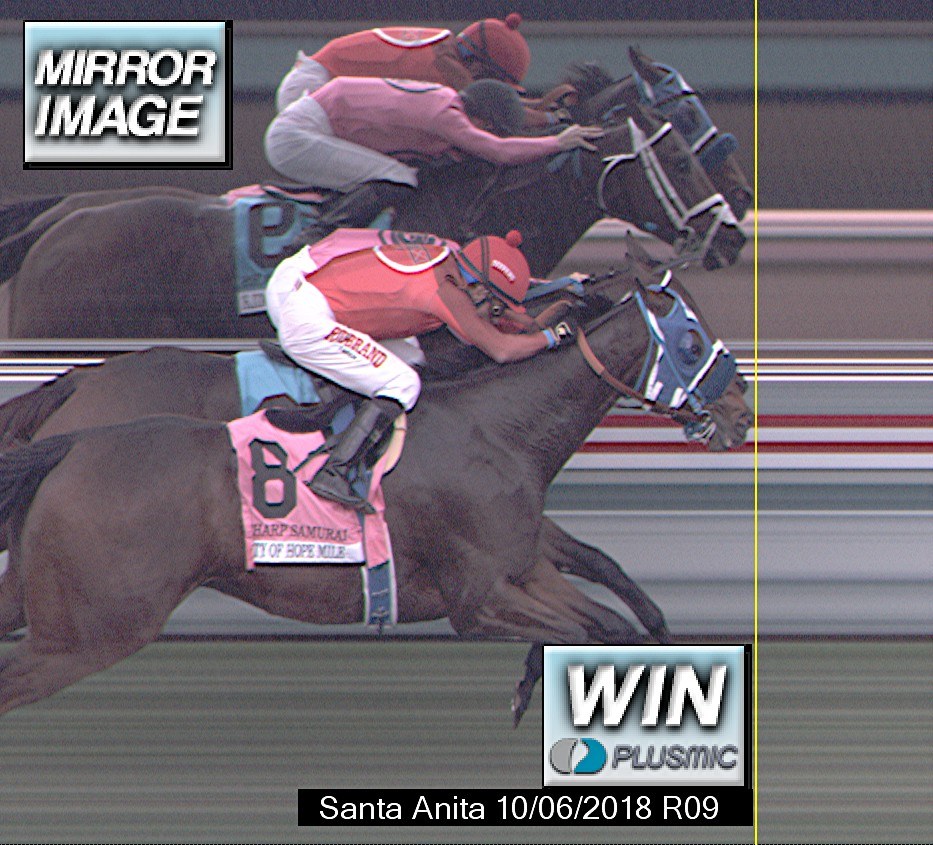In horse racing, a picture is worth only four words – win, lose, or dead heat – not the thousand as the bromide goes. But now, at least one prominent trainer is calling for the racing community to reconsider the technology that determines the difference, saying that his horse got the short end of a judging decision at the City of Hope Mile earlier this month at Santa Anita Park in California.

Speaking on Steve Byk’s “At the Races” radio show last week, thoroughbred trainer Peter Miller balked at an Oct. 6 photo finish at Santa Anita in which judges determined that his horse Fly to Mars lost to Sharp Samurai by something less than a few blurry pixels. Miller said he is considering an appeal to the California Horse Racing Board (CHRB), as he believes better equipment would show this race was a dead heat.
As of press time, no appeal had been filed. But the outspoken Miller is calling for technology upgrades that he says are in the interest of the bettors, owners, trainers, and everyone involved in the sport.
“It’s crazy that horse racing is using 1970’s-1980’s technology,” Miller said. “Every other sport from the Olympics to even bicycle racing has better technology than horseracing. It’s really a disgrace. Everyone deserves better.”
According to Miller, tracks in Hong Kong and Australia have much better technology with contemporary digital tools that can determine the winner in seconds, unlike in the US, where it still can take four or five minutes to determine a winner by a photo and panel of judges.
“It’s a dirty little secret in the United States that our technology is really a joke,” Miller said. “Hopefully the Breeders’ Cup will do something about it soon. There should be no doubt. To have people debating photo finishes in this day and age is pretty ridiculous.”
‘Adequate’ 1-D in the Age of 4K?
A CHRB spokesman said although Miller received the paperwork for an appeal and, as of last week, it had yet to be filed. He also provided a CHRB report of a photo finish incident last fall at Del Mar.
“The photo finish camera technology employed in California is state-of-the-art,” the January CHRB report concluded after an investigation into a previous appeal. “The 1-D frame rates are adequate for our application. A comparison of our photo finish images to other major tracks showed our photos to be equal or better.”
The report further indicated that a printer malfunction caused the delay in posting results. However, the physical photo print was in use at that time because monitors were supposedly inadequate for viewing photo finishes. After the incident, California’s major tracks installed higher definition monitors.
The Oct. 6 photo involving Sharp Samurai and Fly to Mars still took about 9 minutes to be posted as official, leaving bettors sweating out the result.
Considering the millions of dollars on the line for bettors, owners, jockeys, and tracks, it surprises many to learn which available tools many American tracks don’t use. CHRB spokesman Mike Marten said the CHRB is always concerned about anything that impacts the integrity of the sport and may revisit the photo finish technology issue.
Olympic Technology
The type of technology available for determining photo finish winners was on display at the 2016 Olympics in Rio de Janeiro.
The Olympics used the Scan’O’Vision Myria at its finish lines. These cameras scan a small portion of the finish line at 10,000 frames per second, putting vertical slices together to create a detailed image. An inclinometer adjusts the finish line camera to the optimal height, because different sports have different rules on what needs to cross first.
Accompanying the camera, a pair of photocells registers when the athletes cross the finish line, quickly posting official times on scoreboards and broadcasts — a technology that could be adapted to horse racing with relative ease.









